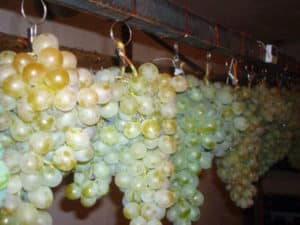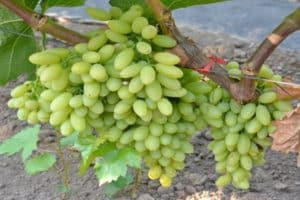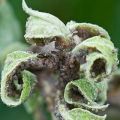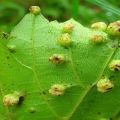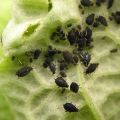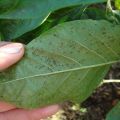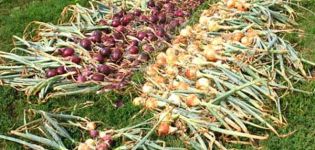How to deal with white aphids on grapes and the best treatment to get rid of
Uninvited guests on garden pets appear for various reasons: they are transferred from other plants, they can move from a neighboring site, or multiply due to the owner's carelessness. What is white aphid in a vineyard and how to deal with it is the topic of today's discussion.
Content
- 1 Causes of the appearance of midges
- 2 What types of aphids grow on grapes
- 3 Signs of vine infestation
- 4 How does aphid spread
- 5 Why is an insect invasion dangerous?
- 6 Treatment chemicals
- 7 Mechanical methods
- 8 Biological agents
- 9 Folk remedies
- 10 Proper care to prevent the appearance of the parasite
- 11 Seasonal prevention measures
Causes of the appearance of midges
There are several probable reasons that insect pests have settled on the grape bush. Sometimes ordinary ants are to blame for this, which use aphids like cows, specially breeding them to get sweet milk.
There are 2 types of grape pests:
- living above, in the aboveground part;
- basal.
There is also an "intermediate" stage linking both types. The source of aphids on grapes is the wind, mud stream, sometimes these insects come by themselves, attracted by the abundance of food. They multiply quickly enough, and if the aphid colony is not destroyed in time, the plants may die. Detection is seriously hampered by the fact that adult insects are inconspicuous, small - rarely exceeding 1.5 millimeters in length.
What types of aphids grow on grapes
Three types of aphids parasitize on vines: root (underground), winged or gallic and sexual. They differ in size, appearance, habitat and life cycle.
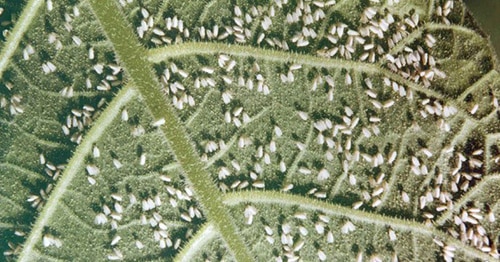
The root aphid grows and feeds all its life below, destroying the underground part of the bush. Gallic is actively moving (sometimes through the air), lays eggs on leaves (swelling of a specific shape - galls). The sexual form consists of males and females, its task is to carry out the only mating in its short life in order to bring out an egg for wintering.
Root variety
Underground insects do not appear on the surface, affecting the roots and the lower part of the stem. All of them are females, greenish-yellow or brown (not black) in color. The back is decorated with a pattern of symmetrical dots; the proboscis is located on the head. Aphids have 3 pairs of limbs and 2 tentacles.
She reproduces by laying eggs. If the female managed to overwinter, she lays about 800 eggs.
Subsequent generations are less prolific. Therefore, when the first clutch is destroyed (by digging the root zone), the owner can secure the plant, keep its root system intact.
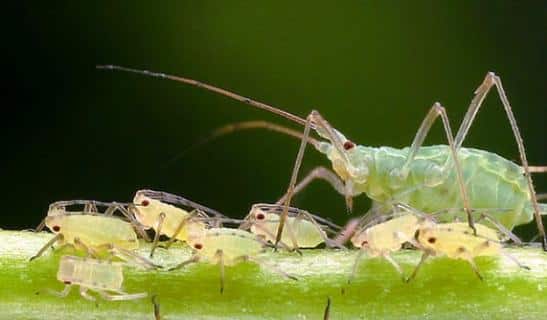
Winged
The shape is recognized by the "graceful" physique and the orange tint of the outer chitinous membranes. They live above the ground, have rudimentary wings located above the upper (pectoral) pair of legs. They are called "nymphs" and come from the underground variety.
Getting to the surface, the aphid transfers 3-4 molts and becomes winged. Body length - 1 millimeter, yellowish color, with light greens or buffy. The limbs and tentacles are oblong, the wings are short, with their help, the nymphs2 successfully move over short distances. This "asexual" species lays eggs on the underside of leaves or on the surface of the bark.
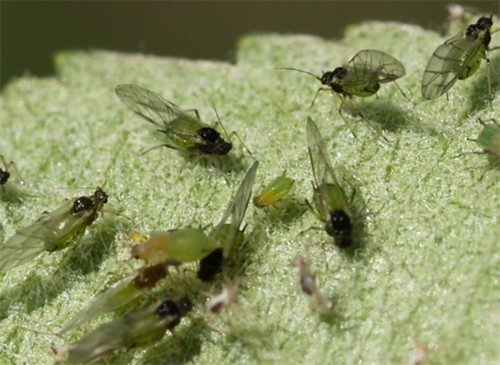
The gall aphid got its name from the characteristic swellings that form on the leaf plates, resembling a nut (galls), where it places the clutch. In the process of growth, insects actively feed, suck juice from the greenery, destroying the grape bush. Some of the brooding larvae go down to the root: this is how the development cycle is closed.
Sexual
Gall aphids lay eggs of 2 sizes: large ones carry females, small ones - males. This is how the sexual form appears. Her only task is to mate so that the female can lay a special, "winter" egg in a deep gap in the bark.
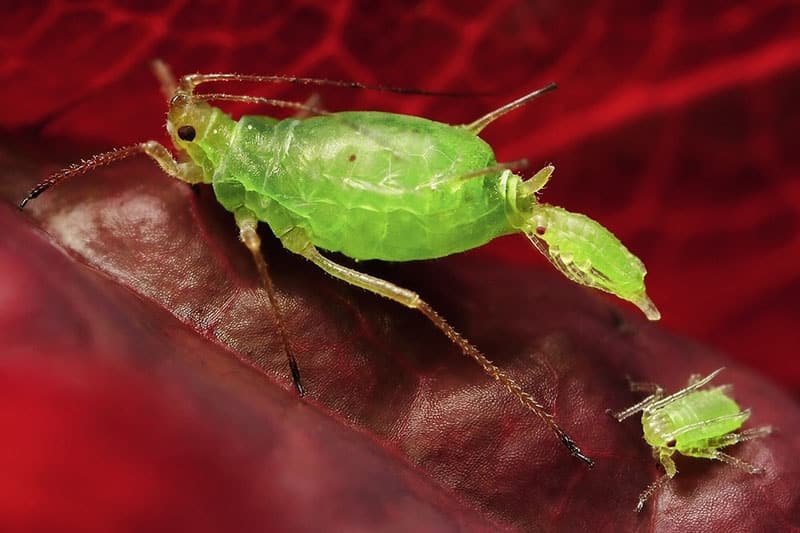
Signs of vine infestation
Aphids or phylloxera are considered one of the most dangerous enemies of grapes. It finds itself on a bush, carried by the wind, soil, water or from other plants (seedlings). The difficulty in identifying is that the insect has a complex life cycle and more than one form of development, moves up and down the bush, destroying leaves and roots.
The underground species is difficult to identify because of its "secrecy", small size of aphids. The gall form leaves marks on the leaves - this is what it parasitizes on. The foliage withers, becomes covered with growths. In general, any unnatural, oppressed state of the vineyard is a reason to think about the presence of unwanted "guests".

How does aphid spread
The "underground inhabitants" brought in with the planting material and soil begin to reproduce: asexual females lay eggs in the roots so that the hatched larvae can suck out the juice from them, gnaw through the passages and parasitize on the plant. Part of the fry rises to the surface, this is how the transition to the second stage, the gall stage, occurs.
It is possible that the life cycle goes in a different direction: the aphid sinks underground in order to continue reproduction there. In any case, without taking effective preventive measures, the plant may die.

Why is an insect invasion dangerous?
If aphids appear on the grapes, then this will not lead to anything good. By itself, the unpleasant guest will not disappear, and if it does, it will only completely destroy the entire bush and neighboring plants. The alternation of life cycles (activity in spring-summer and hibernation in winter) makes it difficult to timely identify the focus of phylloxera distribution.
It can be underground, in the form of adult insects or larvae, on foliage (in clutch) or in winged form, under the bark (in eggs laid for the winter). The gluttonous pest, despite its miniature size, is capable of causing significant damage to the grape plantation.
Treatment chemicals
To get rid of aphids, all methods are good, except for the extreme ones - cutting down and destroying the vineyard. Gardeners use pesticides, spraying the roots and the upper part of the plant, pouring water, processing with improvised means (soapy water).
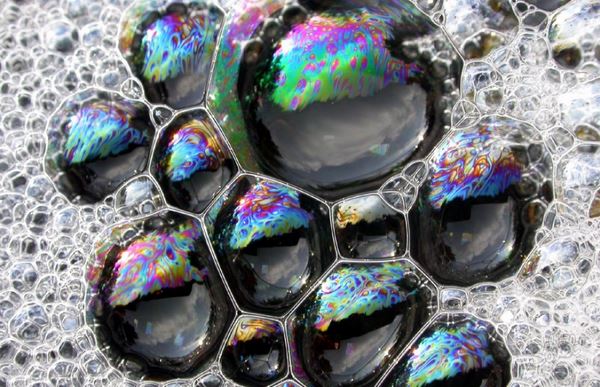
Digging of the root zone, partial replacement of soil with sandy (aphid does not like this) are effective. Pruning, removal of damaged fragments by the pest, followed by burning in an open place, far from the bush, helps a lot.
Fastak
A drug from the group of pyrethroids that affects the gastrointestinal tract of the parasite. It is not washed off by precipitation after watering.It is harmless to pollinators (bees), gives an effect immediately after the detection and treatment of foci of aphid accumulation. Compatible with other fungicides, insecticides.
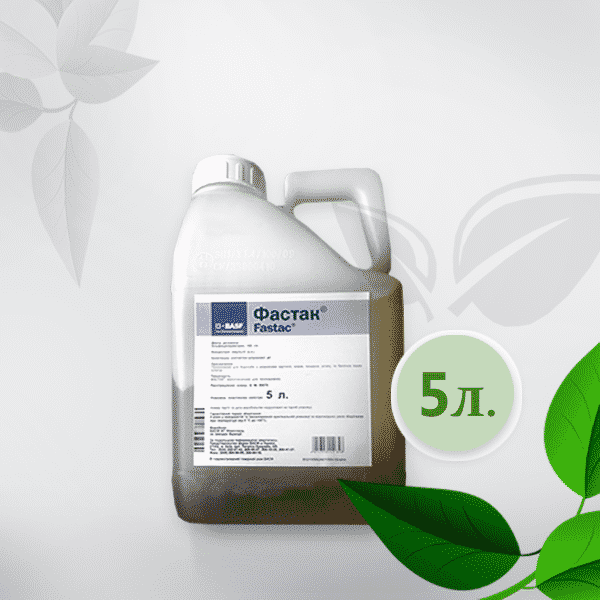
Fozalon
Produced in powder form, it has a specific smell of garlic. It has a long-lasting effect, it is used at temperatures within 13-15 ºС, if other methods do not help.
Actellic
Organophosphate chemical. The grapes are treated with the prepared aqueous solution. Helps with the recurrence of repeated lesions. The disadvantage is toxicity to all insects, birds, animals.
Kinmix
Effectively affects adult aphids and young growth (larvae). Apply during the growing season, once or twice.
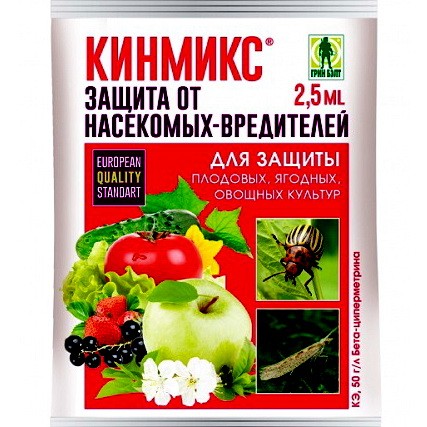
Mechanical methods
These include collecting damaged leaves (eaten or with eggs), loosening the root zone. Combined with other methods can help to achieve significant benefits.
Biological agents
Natural methods are used to control aphids, such as planting peppermint near the vineyard. The pungent odor repels the parasite and protects the shrub from damage.

Folk remedies
There are situations when the use of chemicals is undesirable or unacceptable, then folk methods will help. For them, "decoctions" and "tinctures" prepared according to amateur recipes are used, with which the affected plant is watered.
Soap solution
For 500 milliliters of water, take 2 teaspoons of liquid soap solution, mix, add a tablespoon of sunflower oil. Spray the leaves, stem, ground.

Tomato leaves
The scented leaves of the nightshade are not to the liking of the garden pest. 500 grams of tomato tops are poured with 10 liters of water, insisted for 24 hours. Can be replaced with potato leaves. It is considered effective for the fight against aphids, a tool that is devoid of toxic side effects.
Ash
Harmless to animals and bees, dangerous to aphids. Divorces in water; the above-ground part is treated with the resulting solution, the roots are watered.
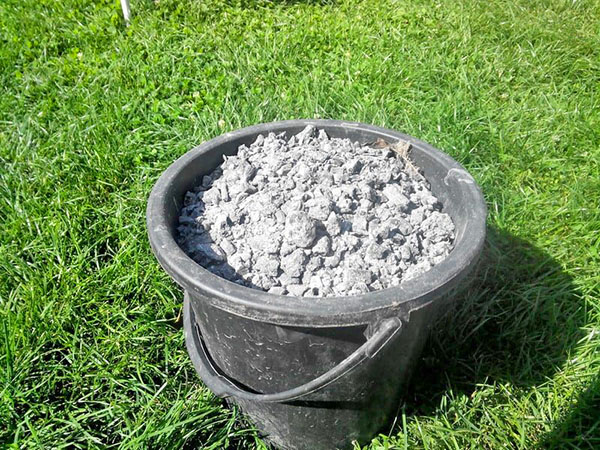
Proper care to prevent the appearance of the parasite
The secret of proper care is to sanitize the seedlings before planting: most often aphids settle there. Insecticide solutions are used (soaking). In case of damage to grapes, it is allowed to use one of the methods: flooding with water for a long period (14-21 days), mechanical removal of surface roots with traces of damage, deep excavation with replacement for a sand mixture.
Seasonal prevention measures
At the beginning of the growing season, it is useful to spray the grapes with chemicals, and in the fall to loosen the root zone and trim the leaves with traces of the pest.
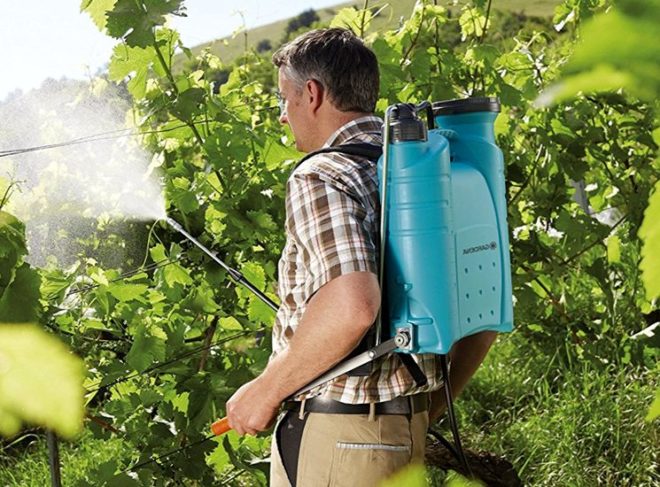
Spring
If the lesion is detected at the initial stage, it will be enough to treat with an insecticide, mechanically remove damaged leaves, followed by burning, and re-spraying after a few days.
Summer
In July, if the symptoms of the "disease" have not disappeared anywhere, re-treatment with pesticides is carried out. Experienced gardeners know that it is not so easy to remove the phylloxer, so you will have to spray the grapes often and regularly.
Autumn
After harvesting, they remove damaged fragments of foliage, shoots, loosen the soil, cut off the surface roots - all the centers where aphids could gain a foothold, lay eggs or hide for wintering. The more larvae and adult insects die, unable to hide from the cold, the better the renewed plant will feel in spring.
